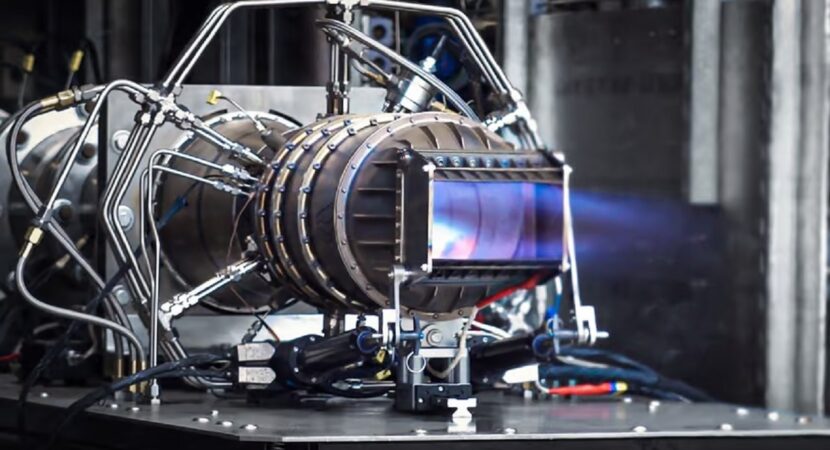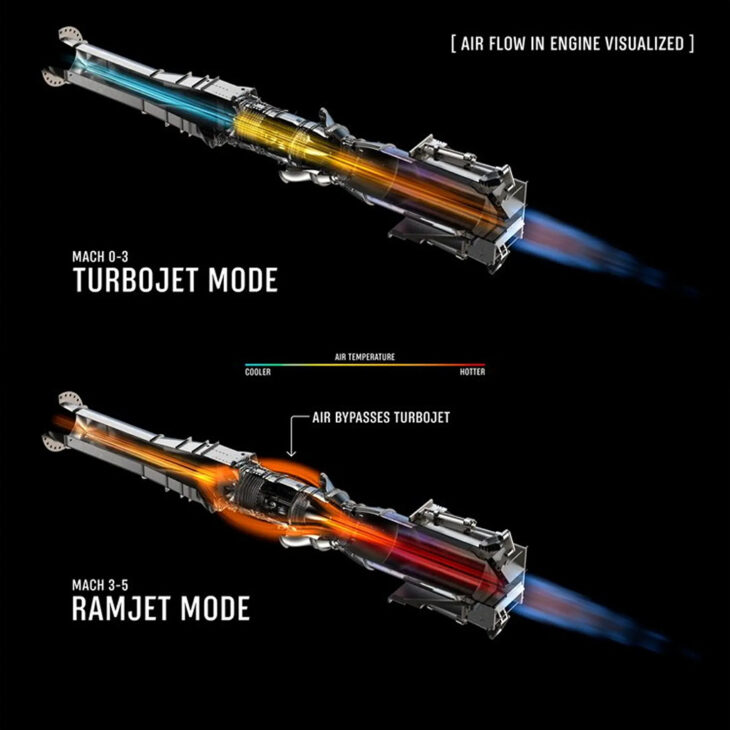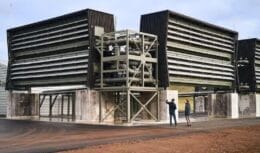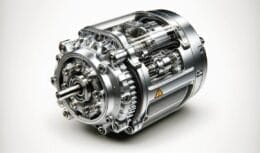
Atlanta firm develops a hybrid engine that can reach mach-4 by switching from turbojet to hypersonic mode while flying.
A Hermeus, an Atlanta-based startup, has developed a hybrid engine capable of switching from low-speed turbojet mode to hypersonic ramjet mode during flight. The company plans develop the fastest aircraft in the world using its hypersonic engine, which received the name of Chimera.
Hybrid engine can reach Mach-4
At Mach 3.3, equivalent to 2.532 miles per hour (4.074,86 km/h), the Lockheed SR-31 Blackbird is currently the fastest jet in the world. To win this model, the company from Atlanta is developing an aircraft named quarterhorse powered by a hypersonic engine that promises to fly at Mach 4, 3.0069 mph.
Hermeus conducted a simulated hypersonic flight test last November at the Notre Dame Turbomachinery Laboratory, in Indiana.
O hybrid engine successfully transitioned from turbojet mode to ramjet mode during this test. The press release issued by the company states that it has demonstrated the transition from turbojet to ramjet on its engine, Chimera. This is one of the most essential achievements of technology to make the hypersonic flight operational in reality.

The ability to switch between the two modes makes it possible for Hermeus' first aircraft, Quarterhorse, to take off from a regular runway and accelerate to high Mach speeds. It is important to mention that the ramjet engines are far more fuel efficient and more powerful than turbojet engines. For example, a turbojet engine is only capable of reaching Mach 3, whereas a ramjet engine is capable of making an aircraft fly at Mach 6.
This achievement is an important technical milestone for Hermeus. But more than that, it's a testament to how our small team can quickly design, build and test hardware on significantly smaller budgets than industry competitors,” said AJ Piplica, CEO of Hermeus.
Key differences between a hypersonic ramjet engine and a turbojet
While turbojets require a compressor to suck in air and compress it for combustion, a ramjet engine does not need a compressor, as its high-speed motion is sufficient to force and compress the air. However, these engines operate at speeds above 300 mph (482,8 km/h) and deliver great performance from Mach 3 onwards.
In this way, despite being ideal for powering missiles, they cannot be used in manned aircraft. On the other hand, a turbojet engine will run efficiently at low speed and even at zero speed. These engines are the right choice for use in commercial aircraft and various army aircraft.
The Chimera is a hybrid engine known as a turbine-based combined cycle engine (TBCC). When the Quarterhorse aircraft is on the run, the TBCC engine acts as a turbojet, making it possible for it to take off, accelerate and reach high speeds. As the temperature and velocity of the air heading towards the Quarterhorse increases, the Chimera hypersonic engine begins the transition from a turbojet to a ramjet.
Hybrid engine with pre-cooler
The transition process begins around Mach 2 speed and ends at Mach 3, when the vehicle's engine starts sucking in air at supersonic speeds.
This air is fast enough to achieve combustion without a compressor. It is now that the turbojet becomes inactive and the ramjet engine kicks in, increasing the speed of the aircraft and making it possible for it to fly at its maximum speed.
According to the company's official statement, the hybrid engine has a pre-cooler that reduces the temperature of the air entering the turbojet. Enabling the vehicle to get a little more performance from the turbojet before transitioning to the ramjet.
At around Mach 3, the engine starts to bypass the incoming air around the turbojet and the ramjet takes over completely.















Nissan Versa 2024: a choice…
While the Brazilian army decided…
Toyota is setting up the biggest…
For the first time in America…
Rival car manufacturer…
With the practically identical characteristics of the four…
Jesus. 145 HP combined?! It must be a…
Unfortunately, if it arrives in Brazil, it will come…
Your calculation is correct, except for the part…
I'm interested, but do I need to know prices?
Will there not be a common flex?…
Who is largely responsible for the production…
I want to train as an analysis technician…